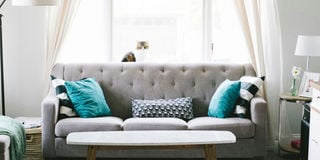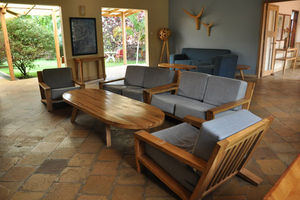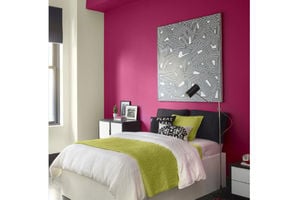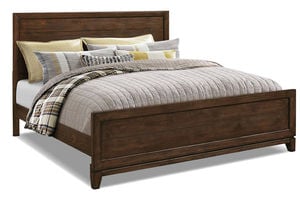
This approach ensures that the design not only functions well but also resonates with the people who will use and experience the space. PHOTO/unsplash.com.
The elements of the environment we live or work in contribute to our well-being and ultimately quality of life. Feng Shui is an ancient Chinese philosophy worth learning about and borrowing from. This practice deals with balancing and harmonising energies in a given space. For example, the Chinese and Japanese are known for homes that have tranquil surroundings, including their gardens which are peaceful and winding, offering surprises at every turn that evoke a sense of harmony and well-being.
Diane Gallin, a Feng Shui consultant and founder of Wind and Water Feng Shui Consulting, reveals that Feng Shui is a 5, 000-year-old Chinese art and science of placement. It can be compared to the deep roots and expansive branching system of an ancient tree that relies on the right conditions to adapt, grow and nurture a place.
Create harmony
“Based on yin/yang theory and the Chinese five elements of wood, water, fire, earth and metal that feed and control each other, it is believed that the balance of elements is key to harmonious, productive living and workspaces. As in nature, when there is too much or too little of a vital natural resource, something withers that should be alive and well,” Gallin, says.
Sarah Vanita Malinga, a principal designer at Xquis-Design describes the style as designing to follow the natural flow of energy, and one that flows or fuses other design styles.
“Whenever designing, consider how the space can have a natural flow of activity,” Malinga observes.
But as Karyn Bagera Mugabo, a senior interior designer at Dreyz Interior Uganda states, the Chinese idea seeks to harmonise individuals with their surroundings, promoting balance, flow, and positive energy within a space with attention to the key elements of layout and orientation of spaces.
The emphasis is on the arrangement of furniture and objects to facilitate the flow of chi throughout the space. She explains, “This often involves positioning furniture in a way that allows for clear pathways and unobstructed movement.”
Bagera adds that Feng Shui highlights the need to create a sense of equilibrium and harmony through the careful selection and placement of colours, shapes, and natural materials such as wood or furniture, stone, and bamboo to connect the space with nature and promote a sense of grounding and tranquility.
Fill a void
Gallin notes that Chinese culture deeply values Feng Shui, which embodies a holistic design approach integrating individuals, their surroundings, and cosmic energies. Over the years, she has relied on this ancient Chinese style to bring transformative change in her own living space and among her numerous clients.
“Usually, people come to me because something feels wrong in their environment. They notice problems with health, wealth, work or relationships and are not sure what to do. I am trained to evaluate their surroundings to see how Feng Shui can help,” the expert explains, adding that often simply moving furniture, clearing a cluttered area or adding colours and art can change the whole look and feel of a place and inspire people to do better. She suggests adding images, introducing a fireplace, shapes or colours of water can help to bring a space to life and kill the boredom.
Bagera also says she has used the arrangement or re-arrangement of furniture to facilitate the flow of energy throughout a space.
“For example, to avoid blocking doorways or pathways place the sofa against a solid wall. Incorporate natural elements such as plants, water features or natural materials like wood and stone to enhance the connection with nature and promote balance. You can use a harmonious colour pallet with soft, soothing tones like greens, blues, and earthy neutrals to create a sense of tranquility. Keep the space clutter-free and well-organised to promote clarity of mind and reduce stress.”
Tips
“Choose colours that resonate with Ugandan landscapes such as earthy tones inspired by the savannah or lush greens reminiscent of the rainforest, is ideal,” she adds.
Gallin says her favourite approach is asking people what is missing in their life or what they would like to change.
“Then we can find ways to use Feng Shui principles to fill that void. For example, a heavily shaded, dark home may feel energetically draining and difficult to get motivated. Opening windows and adding uplifting artwork or colours can change that immediately, since we resonate to what we see, smell and hear,” she advises, noting that Uganda’s moderate subtropical climate makes it ideal for a mix of natural light, sustainable building materials and open spaces inside and out.
The Feng Shui expert tips that in a rectangle-shaped room, it is good to add round shapes in the décor to balance the flow of energy. If the furniture is mostly neutral, adding dramatic, colourful artwork or textiles will always liven up the space.
Gallin also adds, “Mirrors can create a new view of the outdoors when they are hung on a wall opposite a window. Potted plants and interesting throw rugs or pillows help to neutralise the monotony of metal furniture and the hum of electronics. And playing music will always stir up the energy in a place through the vibration of singing or instruments.”
Phillip Luwemba, an interior designer and architectural technology specialist explains that Feng Shui focuses on the placement and arrangement of furniture, choice of colours and decor to create a flow of positive chi (vital life force) energy. He notes that however, owing to limitations such as space, some foreign ideas cannot be fully borrowed.
He explains, “We have to compose our spaces with local considerations, great understanding of foreign techniques is a great addition, focus on usability then use this knowledge to compose spaces that are in visual harmony, interesting and expressive of the user, unless of course a client specifically asks for it in particular.”





